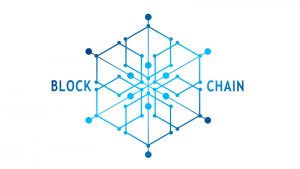Reading the business or technical press you would think blockchain was the about-to-arrive answer to almost everything. That is to ignore some real problem areas, some technical, some environmental and some common sense. In this compilation, from multiple sources (see below), Enterprise Times attempts to raise some red flags which would-be blockchain adopters should reflect on.
These may not destroy your faith in blockchain. They should give rise to thought.
As noted economist Nouriel Roubini has written: “As for the underlying blockchain technology, there are still massive obstacles standing in its way, even if it has more potential than cryptocurrencies. Chief among them is that it lacks the kind of basic common and universal protocols that made the Internet universally accessible (TCP-IP, HTML, and so forth). More fundamentally, its promise of decentralized transactions with no intermediary authority amounts to an untested, Utopian pipedream. No wonder blockchain is ranked close to the peak of the hype cycle of technologies with inflated expectations.

“So, forget about blockchain, Bitcoin, and other cryptocurrencies, and start investing in fintech firms with actual business models, which are slogging away to revolutionize the financial-services industry. You won’t get rich overnight; but you’ll have made the smarter investment.”
10 possible reasons to lack blockchain faith
The following are the base ‘anti-reasons’ to consider about blockchain (and there is more consideration of each below):
- blockchains use excessive energy
- blockchain is not a huge distributed computing system
- mining does not provide network security
- blockchain entries do not last forever or are not immutable
- scalability remains blockchain’s weakness
- blockchain is not indestructible
- the anonymous/open character of blockchains is not an asset, aka: anonymity is not all
- proof of work is overkill
- blockchain can breed complexity
- blockchains can be horribly inefficient.
A note to make. Discussion of each ‘downside’ below is necessarily short. To understand in full, or more, readers should examine the references given as well as other material.
#1 – Blockchains use excessive energy
Competing miners and giant mining farms burn a disproportionate amount of electricity when compared to the outcome, the creation of the next block. In a world where current energy generation is a climate issue, blockchain processing does not make much sense. Why should Bitcoin alone use the equivalent of Switzerland’s annual energy usage?
There is an irony here. If only one-thousandth of the current number of miners existed, and thus one-thousandth of the electric power was consumed, then Bitcoin would be just as good as it is now. It would still produce one block per 10 minutes, process the same number of transactions, and operate at exactly the same speed. The energy consumption for blockchain processing (mining, however conceived and delivered) is an issue that doesn’t look likely to disappear.
Energy usage should be an existential issue for all enterprises enterprises considering blockchain technology. Understanding the ‘energy chain’ in all its aspects is not simple. It is necessary if we are not to devour the planet.
#2 – Blockchain is not a huge distributed computing system
The following (from here) says it all: you might be “under the impression that blockchain is some sort of distributed computer, performing distributed computations. You might have supposed that nodes across the world gather something bigger bit by bit. That is totally incorrect. In fact, all of the nodes that maintain a blockchain do exactly the same thing. Here is what millions of computers do:
- they verify the same transactions in accordance with the same rules and perform identical operations.
- they record the same thing into a blockchain (if they were fortunate enough to be allowed to do so).
- they store the entire history, which is the same for all of them, for all time.
“There is no paralleling, no synergy, and no mutual assistance. There is only instant, millionfold duplication.”
This is the opposite of efficient and, while distributed, it is not a distributed computer system which will benefit all.
#3 – Mining does not provide network security
Many blockchain (especially Bitcoin) proponents argue that miners maintain the stability and security of a blockchain. If there are enough miners this is true.
The problem is that miners can combine. If they do they assemble a coven (in Bitcoin’s case, >50% of mining power) they can rewrite or alter the blockchain record. If this is possible, the security of data disappears.
The counter argument is that there is no economic incentive for miners to shoot themselves in their economic feet. This may be correct where there is sufficient economic incentive.
The counter-counter argument is that a malicious ‘actor’ may find it worthwhile, say for political reasons, to take control, even if only temporarily. The mere possibility of disrupting network security should give enterprises food for thought.
#4 – Blockchain entries do not last forever or are not immutable
See # 3. This encompasses the main point.
#5 – Scalability remains blockchain’s weakness
Bitcoin is the most successful blockchain implementation by numbers of users. Yet just one in every thousand people on the planet use it. Given its (sluggish) transaction-processing speed, significantly increasing the number of active users isn’t practical.
Now consider Visa. It processes thousands of transactions per second for tens of millions of customers. Though expensive, if required, it can increase throughput. When compared, classic banking (and other enterprise-relevant) technologies are far more scalable than blockchain.
One claimed answer is to simplify what is on the blockchain. See #9 for why this has its advantages.
#6 – Blockchain is not indestructible
It may seem that, if a blockchain is stored on each network node, then special services or authorities cannot shut down a blockchain. If no centralised server or control point, then there is nowhere to go to close a blockchain.
Arguably this is a delusion. In the Bitcoin instance, miners tend to operate in competing cartels (pools). They do this in order to try to ensure they earn a reward for their processing (and electricity consumption – see #1).
The challenge here is avoiding concentration. A blockchain is only as indestructible as its dispersion. If, say, more than 50% of miners or providers of blockchain computing service exist in one country, that country’s authorities can prevent indestructibility – for example by cutting off communications or electricity or confiscating server farms.
China, in the Bitcoin context, is the obvious danger. But similarities exist elsewhere. Commercial corporate take-overs might achieve the same.
To plan on blockchain indestructability is not to assess the wider implications. Not recommended.
#7 – The anonymous/open character of blockchains is not an asset, aka: anonymity is not all
One claimed attraction of blockchain is that it is open. Everyone authorized can see everything.
If true blockchain lacks anonymity even if it adds ‘pseudo-anonymity’ instead. Yet ‘pseudo-anonymity’ is not necessarily good for honest users. A simple example: a company transfers a payment via a Bitcoin-like token. The recipient might be able to find out the paying company’s bank balance and payment patterns.
Don’t undervalue this issue. While some disclosure may be acceptable for (say) individuals, this is untrue for businesses. Too much information poses dangers. Excess transparency in matters financial is a potential downside of blockchain, though it may be an asset in logistics or supply chains.
#8 – Proof of work is overkill
Proof of work is overkill. This is true even if you discount or ignore energy consumption consideration (see #1 above).
Even proof of stake and other solutions use linear blockchains. Their reliance on a single chain becomes an Achilles heel.
There are many initiatives to bypass proof of work. Whether they succeed in reducing the overkill dimension will require assessment for each implementation.
This is a thorny and problematic area, not least because understanding alternative models and whether they are superior is not simple. Caveat emptor, on all implementations.
#9 – Blockchain can breed complexity
Many view decentralization as blockchain’s raison d’être. Yet blockchain technology – in its current state – possesses limitations. At the same time, existing centralised structures and services will need to adjust to blockchain technologies, if existing investments are to carry forward.
In this context some argue it makes sense for enterprises to consider a hybrid approach which combines pools the best aspects of centralised and decentralized systems. They envisage this as a waypoint on the voyage towards the endpoint of wholly decentralised structure.
The problem with this is complexity. Think about some of the issues. Take, for example, a blockchain which only holds pointers to records held in conventional databases and/or sidechains). The blockchain may operate with great efficiency and effectiveness – because it has to process so little. But adding an external link, in one or more conventional databases adds more moving parts to fail.
To paraphrase (brutally) Voltaire: “Don’t let complexity be the enemy of effective”.
#10 – Blockchains can be horribly inefficient
Most high-grade blockchain network clients store an entire transaction history. In the Bitcoin case, this record exceeds 100GB – the substantial proportion of the storage capacity of a laptop’s or smartphone. Worse, this replicates across most, not all, participating nodes.
To store blockchain data, that data has to downloaded. As anyone who has ever tried to use a locally stored wallet for cryptocurrency knows he or she cannot make or receive payments until the entire download and verification process is complete. In some cases this takes a couple of days, which users will hardly regard as progress. The alternative is not to store data on every network node. But this would:
- destroy the foundations of peer-to-peer blockchains (and resemble something like traditional client/server)
- require clients to trust servers (but that is to dissipate the ‘not trust anyone’ foundation of blockchains).
Furthermore, the more transactions processed, the faster the size grows. In Bitcoin’s case the greatest bulk of it has appeared over the past couple of years as its popularity has expanded. There is no reason to think that commercial blockchains will be much different. The Ethereum network has accumulated 200GB+ of history data in the blockchain in its first 30 months of use.
Arguably, a blockchain’s life span is limited under current circumstances. If a blockchain cannot exist for ‘a long time’ is it worth the effort?
Enterprise Times: what does it mean
Bitcoin’s components and built-in ideas aren’t new; most aspects existed before 2009. Yet Satoshi et al were the ones who knitted the pieces together to make them work – and introduced the enterprise world to the blockchain concept.
Though there are 10 negative ‘justifications’ about blockchain, the objective is not to discredit blockchain. Rather the purpose is to encourage enterprises to think before acting. This matters when the blockchain environment seems only to promote the positive.
Despite its disadvantages, blockchain also has advantages. Many of these are unique. Again, enterprises must balance the advantages against the disadvantages briefly discussed above (and any additional ones not covered).
Perhaps the greatest trial, for all blockchain implementations, is resolving (if it can be resolved) the inherent contradiction between centralized and decentralized. In practical terms it remains difficult to be half-pregnant.
Sources and supplementary reading:
- http://www.netsuiteblogs.com/blockchain-and-cryptocurrency-past-the-hype-cycle
- https://www.forbes.com/sites/luuloi/2018/03/26/the-hybrid-approach-a-step-towards-wider-adoption-for-blockchain/#6f5cf8d34405
- https://www.project-syndicate.org/commentary/why-bitcoin-is-a-bubble-by-nouriel-roubini-2018-01
- https://hackernoon.com/blockchain-is-bad-2d43e32f843e
- https://www.kaspersky.com/blog/bitcoin-blockchain-issues/18019/
- https://hbr.org/2017/01/the-truth-about-blockchain


























